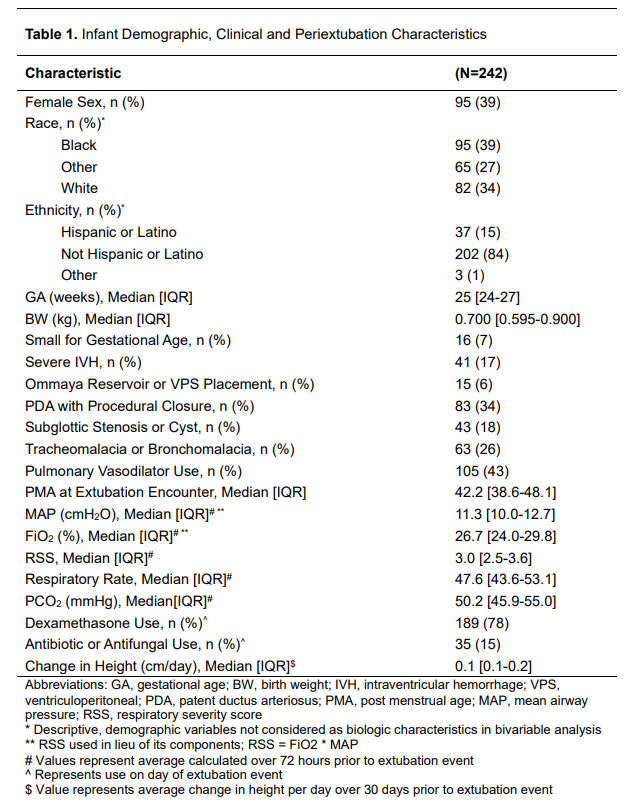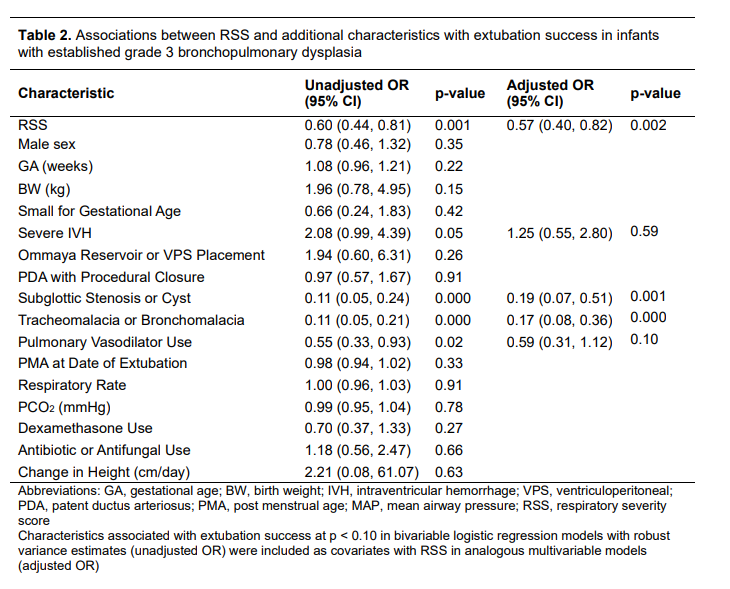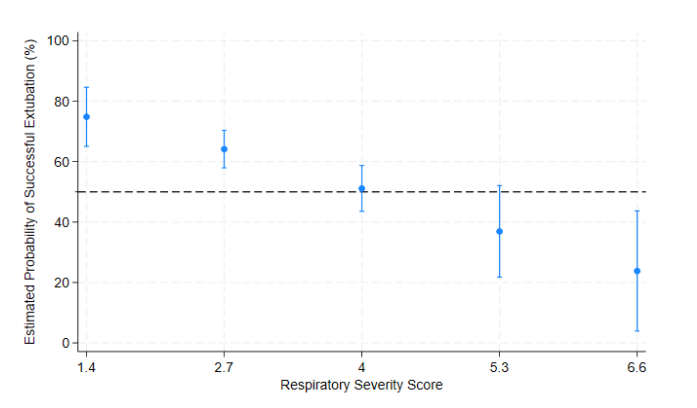Neonatology
Session: Neonatal Pulmonology - Clinical Science 1: BPD, BPD Biomarkers and Diagnosis
181 - The respiratory severity score is associated with extubation success in severe bronchopulmonary dysplasia (BPD)
Monday, May 6, 2024
9:30 AM - 11:30 AM ET
Poster Number: 181
Publication Number: 181.3311
Publication Number: 181.3311
.jpg)
Avery Zierk, MD (he/him/his)
Fellow
Children's Hospital of Philadelphia
Philadelphia, Pennsylvania, United States
Presenting Author(s)
Background: Research on extubation success (ES) in preterm infants has focused on the early postnatal period. Characteristics associated with ES in established grade 3 bronchopulmonary dysplasia (G3-BPD) are unknown. The respiratory severity score (RSS) (mean airway pressure (MAP) x fraction of inspired oxygen (FiO2)) is a simple, noninvasive measure associated with extubation failure, death, and BPD in younger preterm infants and prolonged length of stay and death or need for tracheostomy in established BPD. The association of RSS and other clinical characteristics with ES in G3-BPD has not been reported.
Objective: To identify characteristics associated with ES in G3-BPD. We hypothesized that a higher RSS is independently associated with lower odds of ES.
Design/Methods: In a single center cohort study, we identified infants diagnosed with G3-BPD (2019 NRN criteria) undergoing their first extubation attempt after 36 weeks postmentrual age between 2015-2023. ES was defined as extubation without subsequent need for endotracheal intubation, tracheostomy placement, or death prior to NICU discharge. Intubations for procedural or surgical anesthesia were allowed if followed by extubation within 7 days. The associations between RSS and additional characteristics deemed potentially relevant by providers with expertise in BPD were assessed using bivariable and multivariable linear regression models.
Results: Cohort characteristics are shown in Table 1. We identified 242 extubation attempts. Of these, 144 (60%) were successful. In bivariable analysis, a higher RSS was associated with lower odds of ES; OR (95% CI) 0.60 (0.44, 0.81) p = 0.001. This association was also significant in adjusted models; aOR (95% CI): 0.57 (0.40, 0.82), p = 0.002; Figure 1, Table 2. The associations between additional characteristics and ES are shown in Table 2. The presence of subglottic stenosis or subglottic cyst (aOR (95% CI) 0.19 (0.07, 0.51) p = 0.001), and tracheomalacia or bronchomalacia (aOR (95% CI) 0.17 (0.08, 0.36) p = < 0.001) were independently and strongly associated with lower odds of ES.
Conclusion(s): RSS is independently associated with ES in infants with established G3-BPD undergoing initial extubation attempt after 36 weeks PMA, with lower odds of success as RSS increases. Clinicians may consider this pragmatic and readily available characteristic when considering extubation. Multicenter research is needed to develop formal prediction models for extubation success to provide evidence-based practice extubation guidance for this vulnerable infant population.



